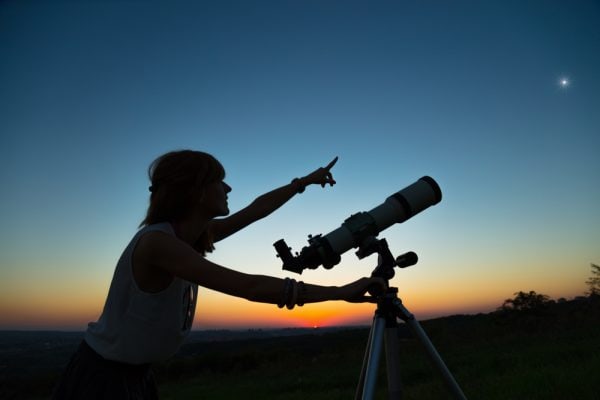
Buying Your First Telescope – 5 Essential Tips
Choosing your first telescope can be daunting, not least because of the huge range of different brands, types, apertures and models. A good telescope is not a cheap piece of equipment either, so you’ll need to read plenty of reviews and, preferably, test out any telescope yourself before you decide which one to purchase. Since you’re starting out for the first time, the following essential tips will help you choose something that should happily keep any amateur skywatcher happy for a few years:
#1. Choose the Right Type
Telescopes are categorized by the methods they use to gather light, with all models broadly falling into one of two types – reflectors and refractors. Refractors are the most common, characterized by their long tubes but relatively simple optics. The other type of telescope if the reflector, which uses a mirror to collect and focus the light. Reflectors are the preferred option for beginners, since they’re cheaper and easier to focus. Most beginner scopes are of the Newtonian reflector design.
#2. Buy Something with a Star Finder
Learning how to navigate the night sky can be quite overwhelming, so it’s strongly advisable to buy a scope with go-to capabilities allowing you to find targets without even having to know where they are. Many mid- to high-end beginner telescopes feature motorized mounts and computerized databases containing thousands of astronomical objects. These scopes will automatically train themselves on any given target using only the time of day and year and your latitude and longitude.
#3. Remember Bigger Isn’t Always Better
Aperture is the single most important specification, since it directly concerns what you’ll be able to see with your new telescope. However, bigger isn’t always better, since the quality of the image is heavily dependent on the quality of the mirrors and lenses. The aperture you need also depends on what you intend to view. While larger apertures are favoured among those who want to observe distant objects like galaxies and take photographs, smaller ones are more portable and easier to use.
#4. Purchase Some Star Charts
An astronomical almanac is a must-have accessory for any first-time skywatcher, even if you have a telescope with go-to capabilities. With an up-to-date almanac for the year, you’ll be able to learn your way around the night sky and identify many objects without having to rely solely on your telescope’s built-in computer. You’ll also be better equipped to plan ahead for your skywatching nights, since you’ll know the best times to view certain objects, such as Venus, Mars or Jupiter.
#5. Prepare to Spend Some Money
Although you might be tempted to buy a cheap telescope for under $100, you’ll usually be far better off with a modest set of binoculars. Skywatching is undoubtedly an expensive hobby, and you’ll need quality optics to avoid being disappointed. If you have less than $200 to spend, you should generally go for a pair of binoculars instead, unless you can buy a quality telescope second-hand or at a heavily discounted price. Generally, however, you should expect to spend upwards of $400.
Final Words
Buying your first telescope requires a lot of thought, since many first-time skywatchers end up being disappointed with their purchases. You’ll need to read some reviews and, even more importantly, trawl the Internet for images taken with the scope to get a better idea of what you can expect to see. You may also need to take into account other important factors, such as ease of use, availability of accessories and portability.